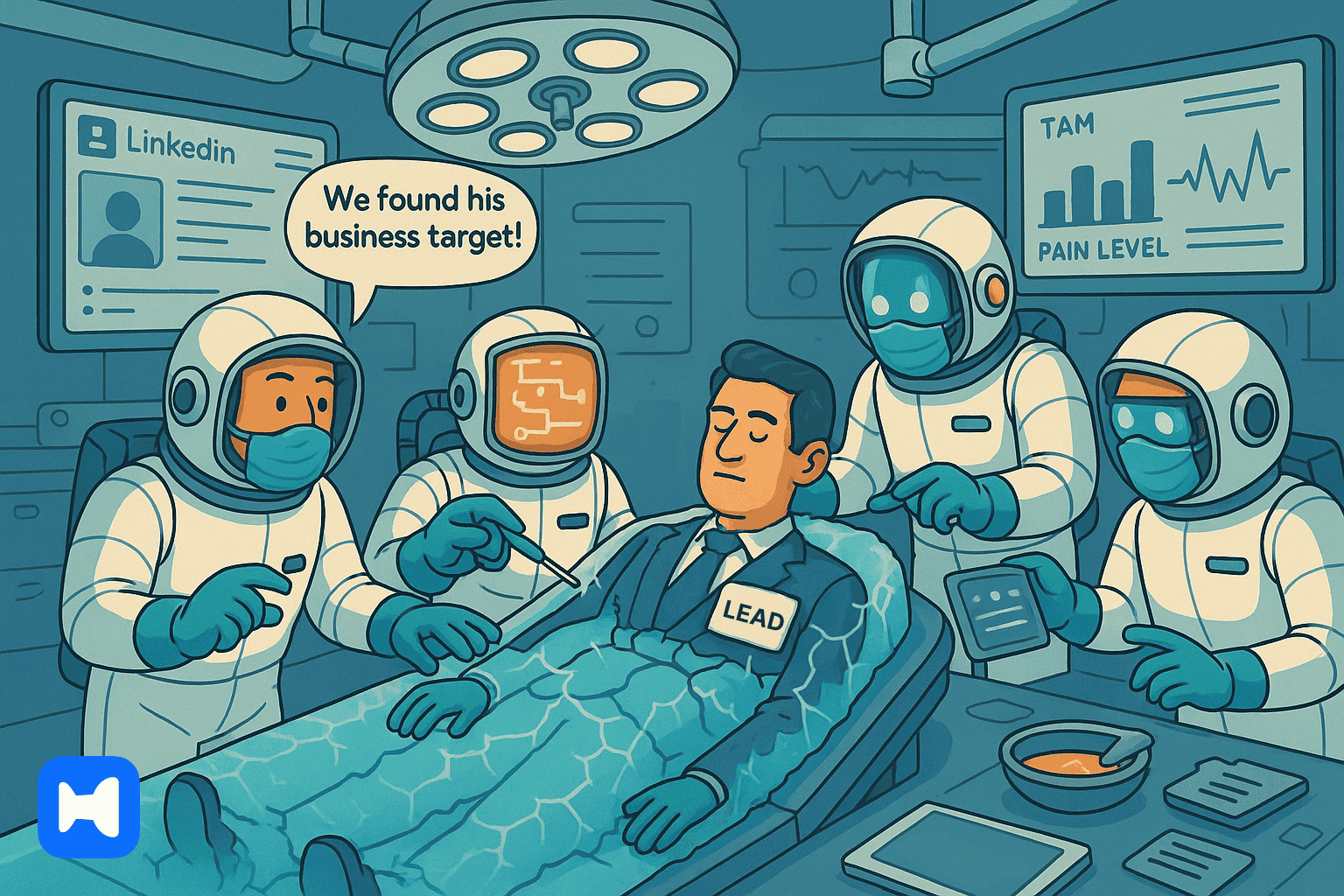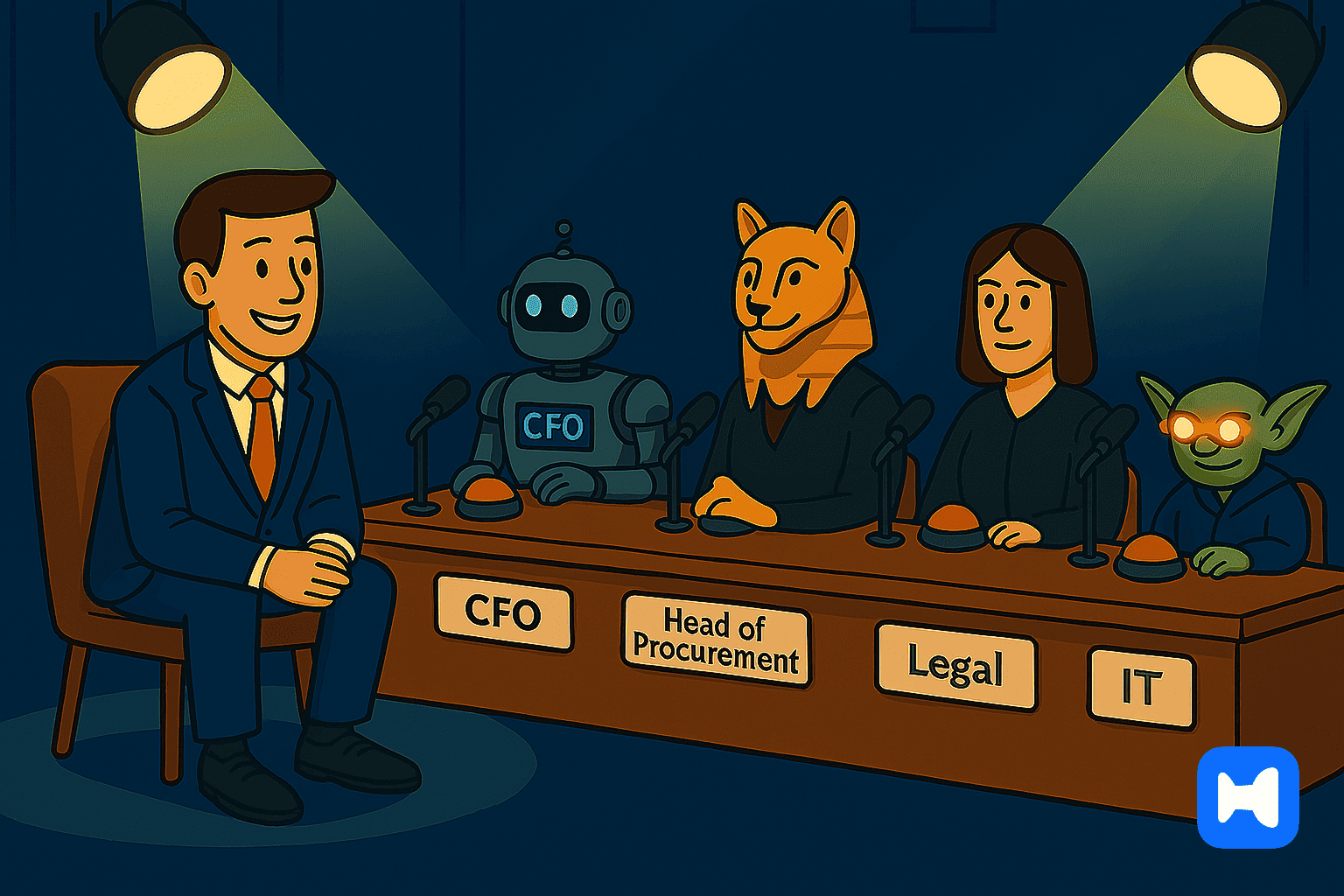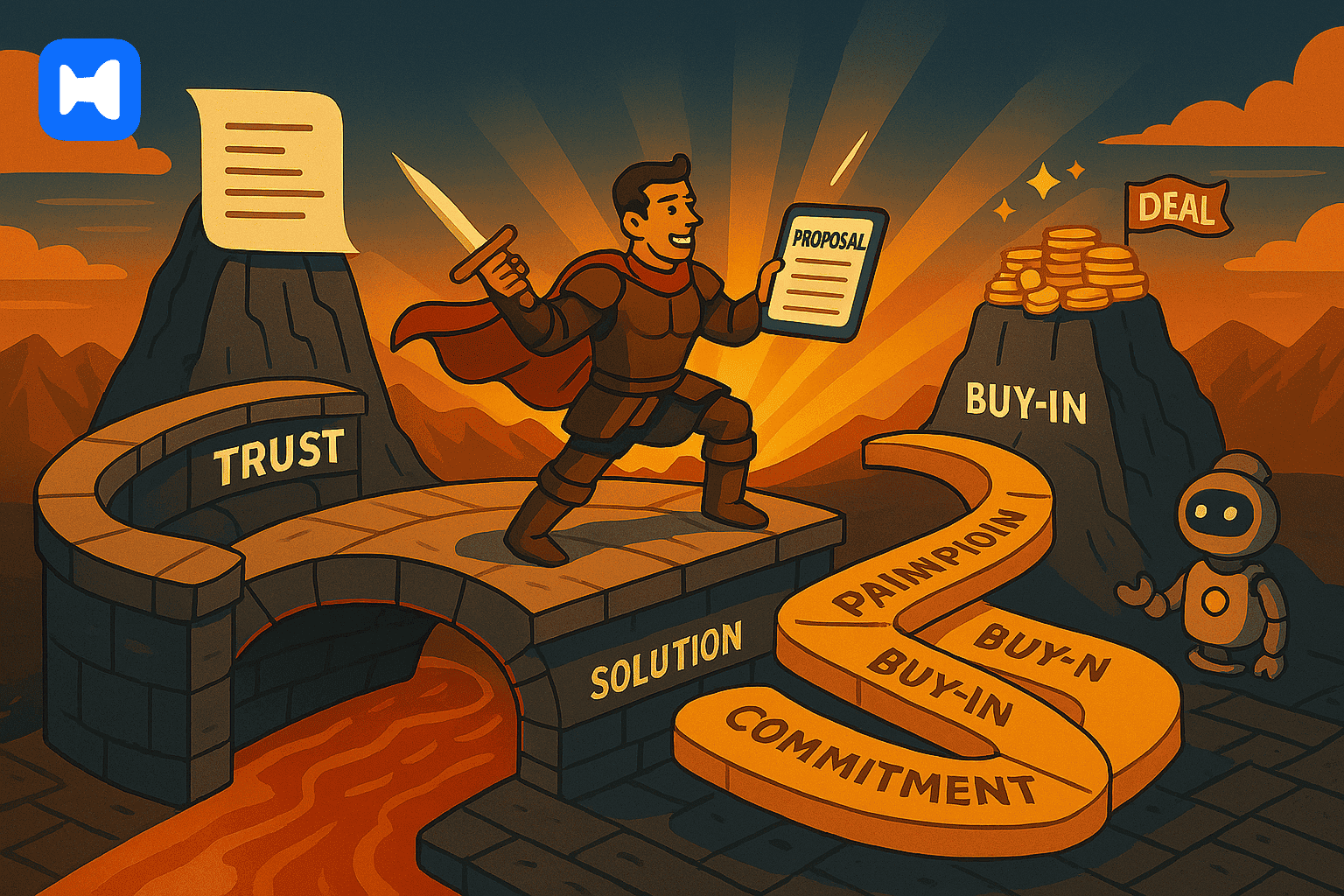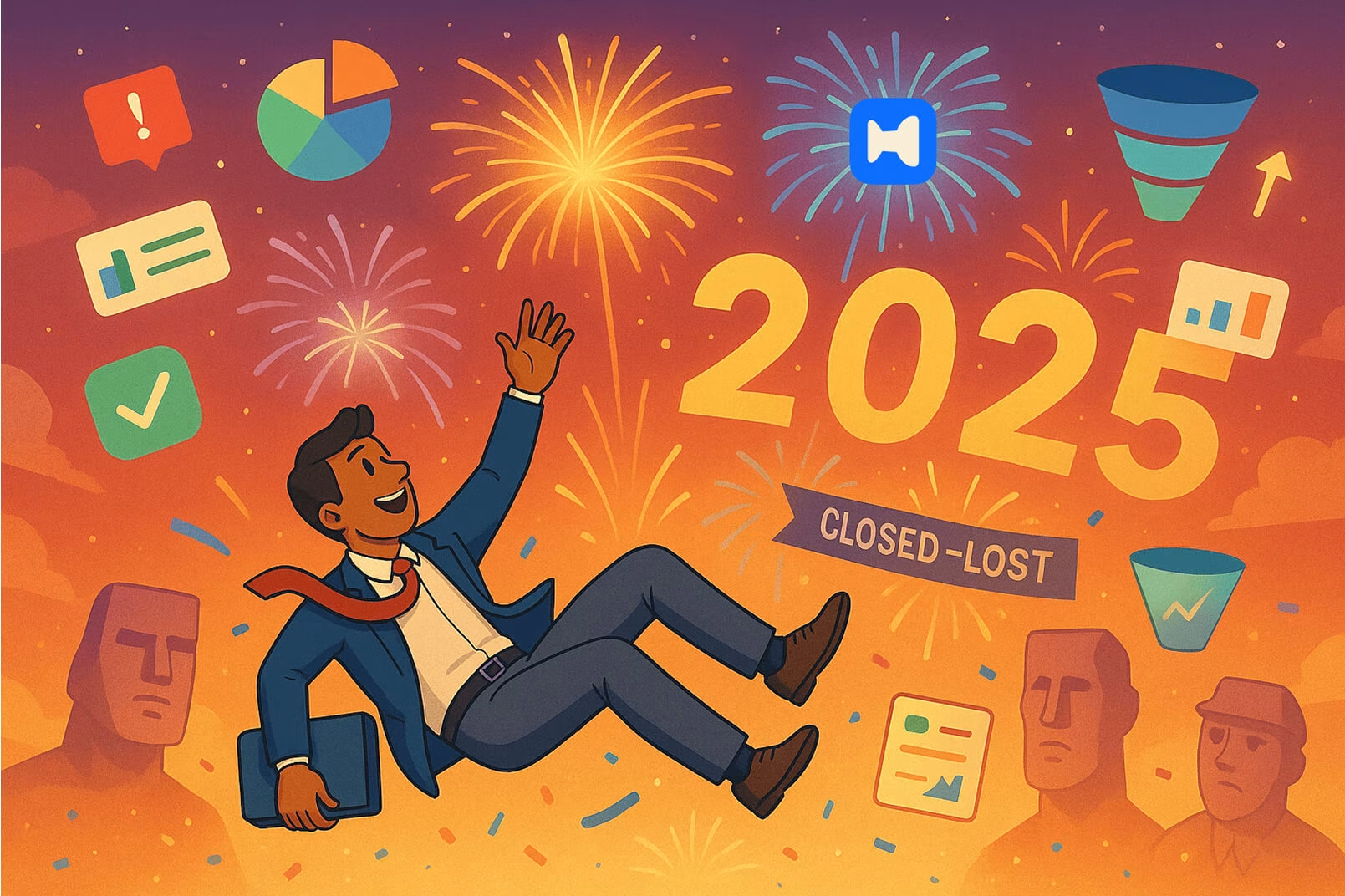B2B Sales Reality in 2025
Let’s not sugarcoat it — B2B sales in 2025 is a different beast. You’re no longer just selling a product. You’re navigating longer sales cycles, multiple stakeholders, and increasingly complex solutions. Add higher price points and decision fatigue into the mix, and you’ve got a sales process that eats your time, energy, and maybe your soul (just a little).
But here’s the good news: you’re not alone. The best sales professionals aren’t guessing — they’re adapting. They use a refined sales model, clear sales tactics, and modern tools that actually support how sales professionals work in real life. Whether you’re managing a team or flying solo, this guide is for you.
Now, let’s step back. What is B2B sales, really? It’s when one business sells a product or service to another — not to individuals, but to entire companies. That means multiple stakeholders, strict procurement, and buyers who demand value from day one. In other words: it’s not casual — it’s calculated. And sales professionals have to be ready for that.
So, if you’ve been wondering what is B2B sales in 2025 — it’s a highly strategic, deeply consultative process where sales professionals guide potential buyers through complex choices with clarity, data, and empathy. And yes, the tools matter — but the mindset matters more.
Let’s walk through the 4 key stages of the modern business to business (B2B) sales process — with 5 punchy insights in each — and see what actually moves the needle.
Research & Lead Generation

Lead generation in B2B isn’t about volume anymore — it’s about precision. You’re not chasing individual consumers. You’re targeting key decision makers inside companies, aligning your message with real pain points, and qualifying based on data, not vibes.
- A lead without pain isn’t a lead.
If there’s no problem, there’s no urgency — and no purchase decision.
- TAM → ICP → Buyer Personas → Outreach.
Total addressable market is where it begins. Ignore it, and you’re guessing.
- Good emails don’t start with “Hope this finds you well.”
They start with relevance. Your sales reps need smarter outreach, not templates from 2015.
- Job changes = signal gold.
Prospective clients who just joined a company are often shaping new strategies — and they’re open.
- 80% of the buyer journey happens before they talk to you.
Which means your marketing teams better know their target customers — and your sales team better align.
You can’t build a strong sales funnel on weak market research. When your sales organization defines buyer personas, understands customer behavior, and targets accounts that are actually in-market, everything downstream improves. And that’s where real sales performance starts — before you even pick up the phone.
Engagement & Discovery

So, they replied. Congrats. Now comes the messy middle — the part where your sales professionals need to earn trust fast, connect across departments, and turn attention into opportunity.
- Don’t ask “Tell me about your company.”
It’s called LinkedIn. Use it. Start with specifics, not fishing questions.
- “What’s keeping you up at night?” belongs in movies.
Try: “What’s the impact if this doesn’t get solved in Q3?”
- Speak their language.
Forget features. Focus on customer success, ROI, risk, and what their sales metrics actually look like.
- Ask about how decisions really get made.
Who’s blocking deals? Who needs proof? Who signs the dotted line?
- You’re not selling to them. You’re helping them sell you internally.
Equip your champion with slides, numbers, and tailored solutions they can pitch to finance, IT, or ops.
In B2B sales, you rarely sell to just one person. There are always multiple stakeholders, internal politics, and competing priorities. That’s why building relationships across departments — and understanding the internal sales process they’re navigating — makes or breaks your deal. Ready to show your value? Let’s go there.
Solution & Deal Process

This is where the deal can speed up or stall. You’ve done the research. You’ve built trust. Now, your sales team needs to present value — clearly, confidently, and repeatedly.
- Demos aren’t product tours.
They’re problem solvers. Start with pain, show the fix, and shut up.
- “Maybe later” is scarier than “No.”
Slow sales cycles are deadly. Sales reps need control, not hope.
- Speak to every decision maker’s metric.
Finance wants ROI. IT wants safety. Marketing wants speed. Align or die.
- Always sell the next step.
From demo to internal alignment. From call to proposal. Step-by-step wins.
- Never just send the deck.
If they say “Just send info,” book a 10-min walkthrough instead. Control the message.
B2B sales tools and sales software should support this stage — think sales playbooks, data driven decision making, and tools that give sales and marketing teams real insight. The sales model is no longer linear. It’s consultative, adaptive, and supported by ongoing collaboration. If you’re selling complex solutions to other businesses, this is where confidence matters most.
And to stay ahead, top-performing sales teams now rely on sales enablement technology and real-time sales data to guide each step. It’s not about guessing — it’s about responding with insight.
Closing, Onboarding & Retention

Let’s be honest: many B2B teams celebrate too early. A contract is great, but in B2B, what happens after the signature is what builds your brand, drives customer loyalty, and feeds your pipeline with referrals.
- Closed-won ≠ success.
Success is when they recommend you. That’s customer engagement.
- The first 72 hours after closing set the tone.
Silence = regret. Action = trust.
- Onboarding is your second pitch.
Bad onboarding = churn risk. Period.
- A “thank you” message means more than a dashboard score.
Sales reps: watch the emotion, not just the metrics.
- B2B sales is a loop, not a funnel.
Your future potential customers are already watching how you treat the ones you just closed.
Customer relationship management doesn’t end with the CRM. It includes post sale support, in person meetings, tailored follow-ups, and ongoing support from sales and marketing teams. Smart organizations use this phase to maximize sales success, build customer retention, and inform future outreach. This is where you turn clients into champions.
B2B Sales Trends to Watch in 2025
If you’re wondering what’s actually changing in the world of B2B sales — and why your old playbook might be gathering dust — here’s your snapshot. These aren’t abstract predictions; they’re the daily shifts your sales reps are already dealing with.
Let’s look at six real trends shaping how business to business sales teams engage potential clients, manage longer sales cycles, and rethink their funnel from top to bottom.
And here’s the kicker: none of these trends are slowing down. If anything, they’re accelerating. The way your sales organization adapts to these realities will define your growth curve for the next five years. And don’t worry — we’re not leaving you hanging. Let’s wrap it all up with what it really means to win in B2B sales in 2025 — and what your next best step might look like.
Final Word on Selling Smarter
Let’s recap what we’ve just unpacked:
The B2B sales process in 2025 is sharper, longer, and built on collaboration. Sales reps can’t afford distractions — they need sales enablement tools that let them focus on high-impact sales activities. Great sales teams align with marketing, share sales objectives, and move together through the entire sales funnel.
Modern sales organizations rely on marketing automation, clean customer relationship management CRM, and streamlined sales operations to stay competitive. The buyer journey spans email marketing, personalized content, and onboarding touchpoints — all mapped and tracked.
B2B sales is about one business selling to another — with longer sales cycles, higher price points, and multiple stakeholders. Unlike business to consumer transactions, this process demands strategic selling, trust-building, and often account based sales. Selling now means guiding potential clients, not just pitching.
Cold calling without prep? Waste of time. Sales calls without real value? Dead on arrival. Smart teams read signals — from budget shifts to something as simple as changes in office supplies usage.
To measure success, track sales productivity across every step of the selling process. You’re not closing deals — you’re nurturing relationships, easing pain points, and building trust.
Because in 2025, true business to business sales starts with clarity — and ends with sales teams who know how to win together.
Why We Even Wrote This
We get it — because we live it. We built Wellpin after seeing sales reps spend hours scheduling calls, sending links, and chasing decision makers just to confirm a time. That’s not sales. That’s admin.
One of our clients — an HR SaaS company — added Wellpin to their sales workflow.
- No-show rates dropped 35%
- Their average time from lead to first call fell from 4 days to 1
- One account executive saved 7 hours per week — just from eliminating back-and-forth messages
Wellpin helps sales teams focus on… well, sales.
📅 Bookings happen faster.
⏰ Reminders are automatic.
📬 Follow-ups don’t fall through the cracks.
If you’re running a sales organization that’s tired of losing momentum between the yes and the call — Wellpin’s for you.
👉 Try it free. No card. No BS. Just fewer delays, more calls, and cleaner sales cycles.



